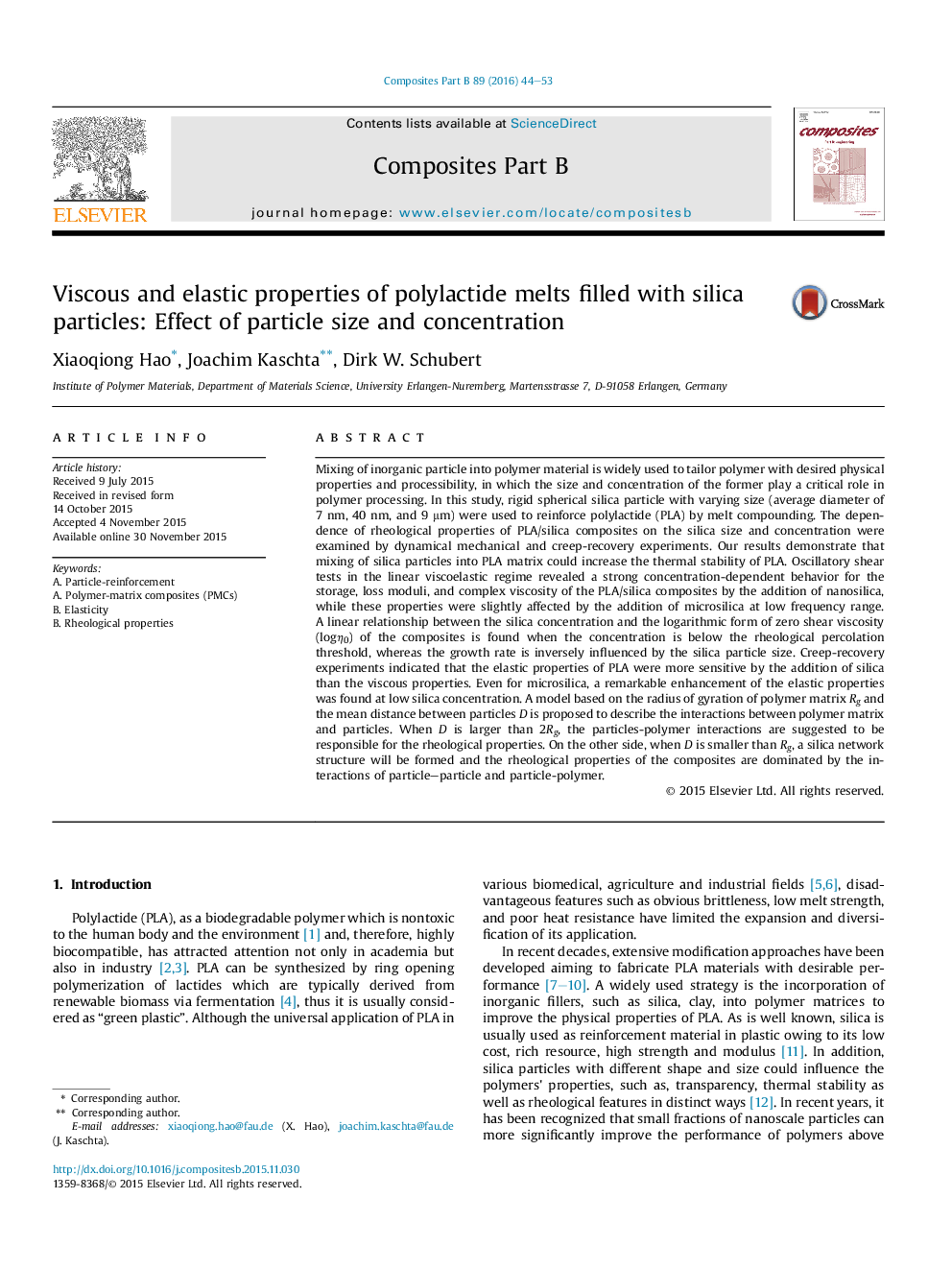| کد مقاله | کد نشریه | سال انتشار | مقاله انگلیسی | نسخه تمام متن |
|---|---|---|---|---|
| 816963 | 1469396 | 2016 | 10 صفحه PDF | دانلود رایگان |
Mixing of inorganic particle into polymer material is widely used to tailor polymer with desired physical properties and processibility, in which the size and concentration of the former play a critical role in polymer processing. In this study, rigid spherical silica particle with varying size (average diameter of 7 nm, 40 nm, and 9 μm) were used to reinforce polylactide (PLA) by melt compounding. The dependence of rheological properties of PLA/silica composites on the silica size and concentration were examined by dynamical mechanical and creep-recovery experiments. Our results demonstrate that mixing of silica particles into PLA matrix could increase the thermal stability of PLA. Oscillatory shear tests in the linear viscoelastic regime revealed a strong concentration-dependent behavior for the storage, loss moduli, and complex viscosity of the PLA/silica composites by the addition of nanosilica, while these properties were slightly affected by the addition of microsilica at low frequency range. A linear relationship between the silica concentration and the logarithmic form of zero shear viscosity (logη0) of the composites is found when the concentration is below the rheological percolation threshold, whereas the growth rate is inversely influenced by the silica particle size. Creep-recovery experiments indicated that the elastic properties of PLA were more sensitive by the addition of silica than the viscous properties. Even for microsilica, a remarkable enhancement of the elastic properties was found at low silica concentration. A model based on the radius of gyration of polymer matrix Rg and the mean distance between particles D is proposed to describe the interactions between polymer matrix and particles. When D is larger than 2Rg, the particles-polymer interactions are suggested to be responsible for the rheological properties. On the other side, when D is smaller than Rg, a silica network structure will be formed and the rheological properties of the composites are dominated by the interactions of particle–particle and particle-polymer.
Journal: Composites Part B: Engineering - Volume 89, 15 March 2016, Pages 44–53
